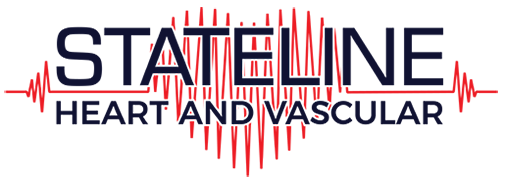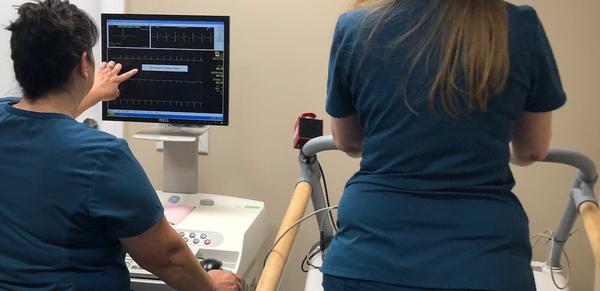Non-Invasive Testing
Electrocardiograms (EKG)
An EKG is used to detect heart problems and monitor the heart's status.
During an electrocardiogram small sensors are placed on your chest and/or limbs. These sensors detect the electrical activity of your heart. The electrical activity is then recorded as waves on a graph that can be interpreted by your doctor to detect irregular activity.
Ankle-Brachial Index (ABI)
The ankle-brachial index test is used to check for peripheral artery disease (PAD).
During this test your blood pressure is measured in both arms and both ankles, using an inflatable cuff and a hand-held ultrasound device that's pressed on your skin. The device uses sound waves to produce images and allows your pulse to be heard in your ankle arteries after the cuff is deflated.
Then the blood pressure measured at your ankle is compared with the blood pressure measured at your arm. Your doctor uses the index to determine if you are experiencing any narrowing or blockage of the arteries in your legs.
Holter and Event Monitor
A Holter monitor is a battery-operated portable device used to measure and record your heart’s activity (ECG) continuously.
The Holter monitor records your EKG as you go about your daily activities to detect heart problems and monitor the heart's status over time. Small sensors are placed on your chest to monitor the electrical activity of your heart. The electrical activity is then recorded to be interpreted by your doctor to detect irregular activity.
Device Interrogation
Device interrogation is performed to monitor device information or change programmed settings of your implanted device.
During device interrogation a wand is placed over your device that is linked to a computer. The computer then gathers information from the memory of your device and can change the programmed settings if needed.
Stress Tests
Treadmill Stress Test
A treadmill stress test can be performed for a variety of reasons, including:
- To assess symptoms, such as chest pain, shortness of breath or palpitations.
- To assess blood flow to the heart.
- To assess the efficiency of heart medications.
- To detect signs of coronary heart disease.
- To identify abnormal heart rhythms.
- To assess the function of heart valves.
- To assist in the development of a safe exercise program.
Your doctor may have special instructions to prepare you for this test. Typically an EKG is performed prior to beginning any activity. During a treadmill stress test you will begin exercise with the degree of difficulty gradually increasing until you feel exhausted. Medications may or may not be administered during your test depending on the objectives of your testing.
Nuclear Stress Test
A nuclear stress test is used to assess blood flow or damage in your heart.
Your doctor may have special instructions for you to follow in order to prepare you for the test. During a nuclear stress test radioactive dye is injected into your arm through an IV and an imaging machine is used to create pictures showing the blood flow to your heart. Measurements will be taken both while you are at rest and exercising.
Stress Echocardiography (ECHO)
A stress echocardiography determines how well your heart and blood vessels are working.
During a stress echocardiography you will exercise while your doctor monitors your blood pressure and heart rhythm. When your heart rate reaches peak levels, ultrasound images will be taken of your heart to determine whether your heart muscles are getting enough blood and oxygen.





